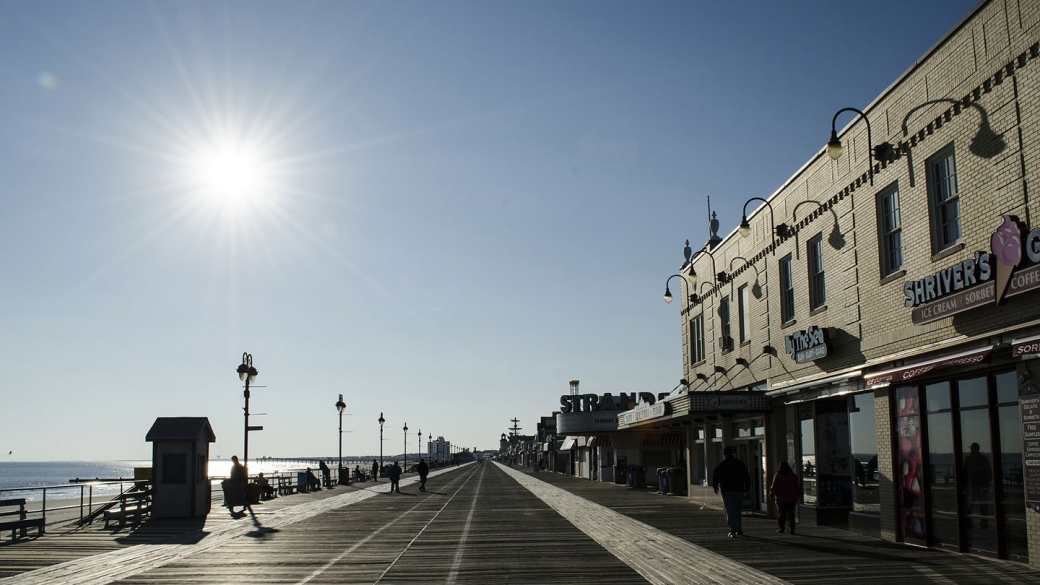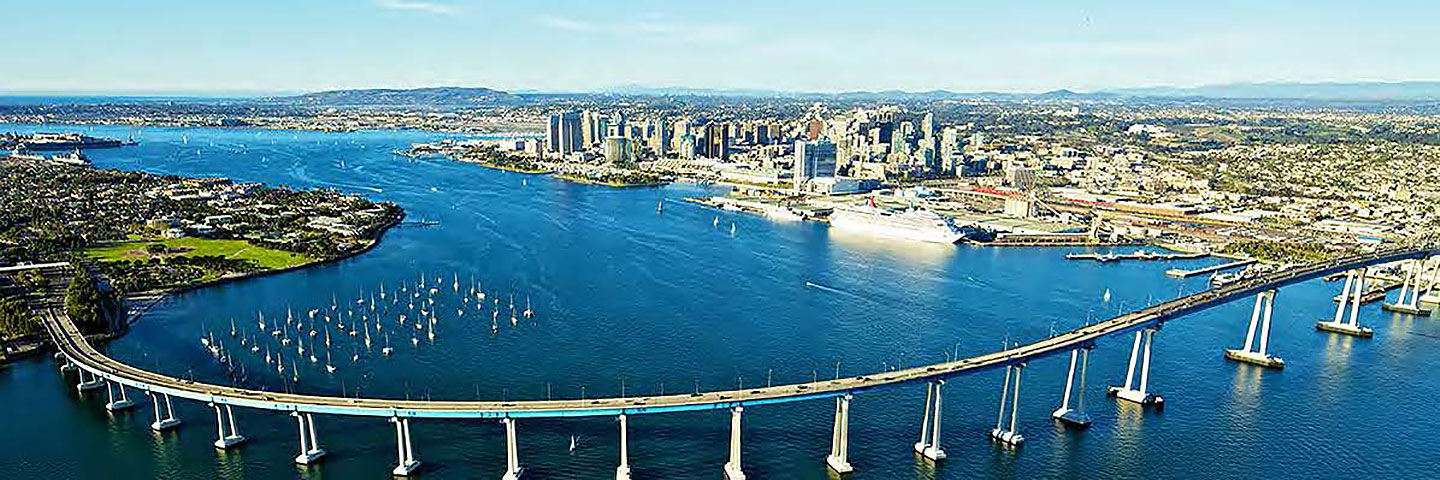New Reports Estimate Multi-Billion-Dollar Economic Risks for Mid-Atlantic, San Diego Regions Due to Climate Change

Two recent reports from the Institute’s Center for the Blue Economy (CBE) estimate multi-billion-dollar economic impacts on both the East and West Coasts of the U.S. due to sea level rise and intensified storm activity driven by climate change, with millions of homes and jobs at risk, as well as billions in property. CBE Research Director Charles Colgan served as the lead author for both reports, which identified major economic risk factors for the Mid-Atlantic and San Diego County coastal regions.
Mid-Atlantic Report
Regarding the East Coast, the Mid-Atlantic Regional Council on the Ocean (MARCO) asked the CBE to assess the economic vulnerability to climate change of the region from New York to Virginia. The resulting report, prepared in collaboration with the Marine Policy Center of the Woods Hole Oceanographic Institution, quantifies the potential impacts of threats like sea level rise, rising ocean temperatures and changes in the ocean’s chemistry to communities and businesses along the most densely populated stretch of coastline in the country. The region is home to the nation’s largest city, New York; two of its busiest ports in New York/New Jersey and Hampton Roads, Virginia; and many popular summer beach destinations.
The analysis considered the ramifications of both temporary flooding events and the permanent inundation of some areas that would occur if sea levels were to rise by three or six feet by the year 2100 – two scenarios that are commonly assumed by planners throughout the region. Among the findings:
- Approximately 14.6 million people live in Census tracts adjacent to the Atlantic, Chesapeake or Delaware bays. In the three-foot scenario, the resulting flooded area could affect 1.7 million people and in the six-foot scenario, 2.1 million people.
- Today, 912,000 housing units would be vulnerable to flooding in the three-foot scenario and 1.1 million in the six-foot scenario. These include 212,000 seasonal units in the three-foot scenario and 248,000 in the six-foot scenario.
- Approximately 557,000 jobs would be vulnerable in the three-foot scenario and 974,000 in the six-foot scenario.
- The region’s major urban centers’ vulnerability to severe disruption increases significantly if sea level rises more than three feet.
“No community or business in the Mid-Atlantic will be spared from the impacts of climate change,” said Colgan, the study’s lead author. “This is not simply a threat to waterfront areas. With everything from jobs to the housing market being tightly bound to ocean-dependent industries, every coastal community, whether beachfront or further inland, has some vulnerability.”
The report suggests strategies that are being employed throughout the Mid-Atlantic to adapt to climate change—for example, considering climate change in designs when rehabilitating or replacing port infrastructure. Natural defenses such as the restoration of wetlands and marsh grasses are also identified as cost-effective means for addressing the threats of retreating shorelines and encroachments from coastal development. “Natural infrastructure reduced coastal property damages by $650 million during Superstorm Sandy,” said Colgan.
The report, “Climate Change Vulnerabilities in the Coastal Mid-Atlantic Region,” was prepared as part of the MARCO-led “Planning for a Changing Ocean” project, which aims to better understand how a changing climate impacts our ocean and the Mid-Atlantic’s diverse marine ecosystems, coastal communities and economies.
No community or business in the Mid-Atlantic will be spared from the impacts of climate change. This is not simply a threat to waterfront areas. With everything from jobs to the housing market being tightly bound to ocean-dependent industries, every coastal community, whether beachfront or further inland, has some vulnerability.
San Diego County Report
On the West Coast, the San Diego Regional Climate Collaborative asked Colgan and the CBE to conduct a similar review of the potential economic impacts of climate change.
San Diego County is the 17th largest metropolitan area in the country and the 5th largest in California, and its Gross Domestic Product (GDP) is larger than 25 other U.S. states. Using sea level rise and storm scenarios estimated by the U.S. Geological Survey’s Coastal Storms Modeling Systems, CBE staff estimated the economic impacts of flooding for three scenarios and two time periods.

Under the highest sea level scenario with the most severe storm (two meters or roughly six feet in sea level rise and a 1% or 100-year storm), over 2,600 establishments with 49,000 jobs, $8.0 billion in sales, and $6.1 billion in contribution to the gross domestic product in San Diego County are vulnerable to flooding. Under this same scenario, $2.2 billion to $2.6 billion in buildings and equipment on property classified as commercial or industrial is at risk of damage. These estimates assume that maximum flood depth affects all establishments.
“Our findings are not forecasts of specific impacts, but indicators of the current parts of the San Diego county economy that are at risk of repeated and increasing flood damages as sea levels rise,” said Colgan. “The most vulnerable parts of the region are in the San Diego Bay region, particularly the City of San Diego. The region’s key tourism and recreation industry is most threatened.”
This combination of factors suggests that the annual risks of flooding are likely to be higher than presented in the CBE report (“Regional Economic Vulnerability to Sea Level Rise In San Diego County”) which is based on historical patterns shaped by a different climate than the one likely to exist in the future. The CBE study is part of a larger effort regionally known as “The Resilient Coastlines Project,” a recently completed project of the San Diego Climate Collaborative that supported more than 14 local sea level rise initiatives in the San Diego region.
For More Information
Jason Warburg
jwarburg@middlebury.edu
831-647-3516
Eva Gudbergsdottir
evag@middlebury.edu
831-647-6606
